Purchasing an Engagement Ring Remotely
Whether you are in the market or know someone who is (or will be), you should know how game-changing online shopping has become. In today’s digital age, purchasing an engagement…
Diamond Carat Weight – Basics
Carat weight has the most impact on value but you can’t judge a diamond’s visual size by its weight (see below) nor even its physical dimensions. Bright jewelry store lights make all diamonds look bright and big. When removed from spotlights, many diamonds go dark at the edges, seeming to shrink before your eyes. Read on and learn how to avoid this.
PriceScope Pointer: Great cut quality can make your diamond look larger.
Before going on: Check out the PriceScope Diamond Buying Guide
Where To Buy Loose Diamonds? Our elite list of vetted vendors like Whiteflash and James Allen are experts at listening and helping you determine which combo of the 4Cs is perfect for you - and nicely in budget. Contact Us and get help today.
One diamond carat equals 200 milligrams. Putting that in perspective, a small paperclip weighs about 600 milligrams, so a paper clip on your finger weighs about the same as a three carat diamond. A carat can also be divided into 100 points, so jewelers call a 1/4 carat diamond a 25-point diamond, a 1/2 carat diamond a 50-pointer, and so on.

Why? Because we usually view diamonds from only one direction – looking down from above. Imagine a 1-pound meatball and a 1-pound pancake. On a scale, they weigh the same. But they look different on the tray, because the meatballs have a deep vertical geometry while the pancake is distributed horizontally.
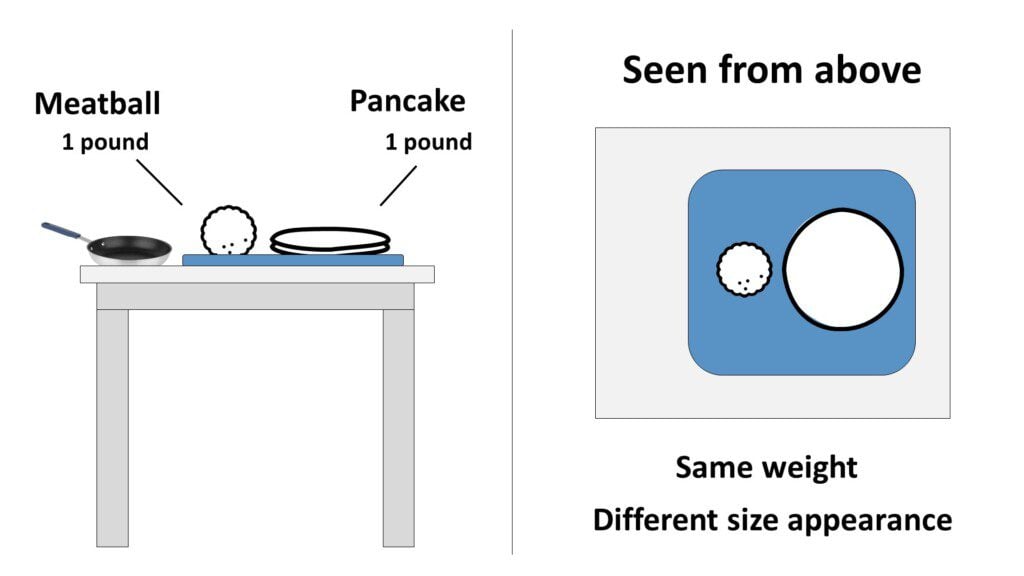
This is why it’s important to correlate diamond carat weight with side-to-side spread in millimeters, to ensure a diamond “faces-up” the correct size for its weight. A diamond’s grading report will include its external measurements in millimeters, from which you can determine its spread, side to side.
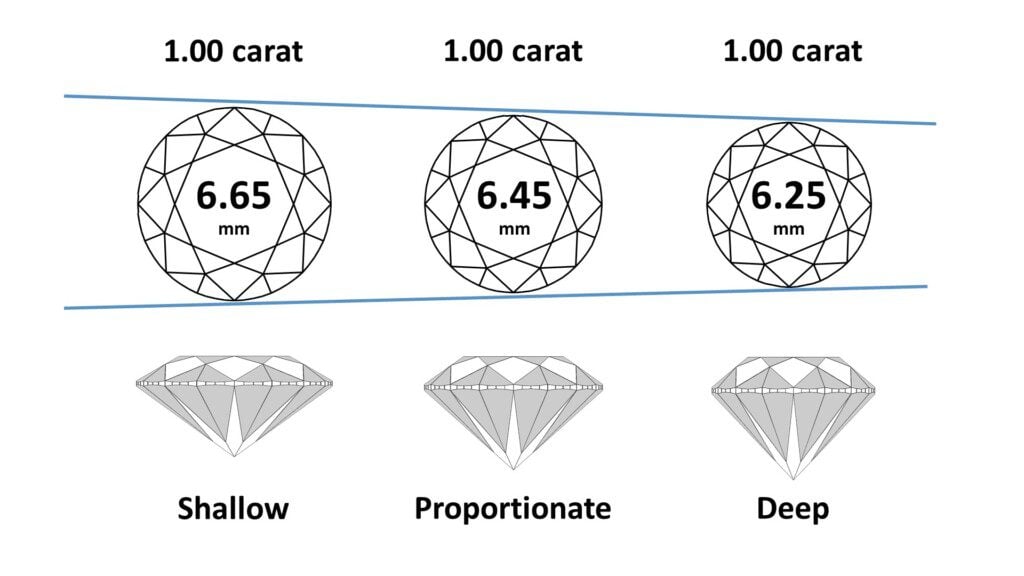
While the shallow diamond above will appear physically larger from above in jewelry store spotlights it’s not necessarily the best choice for those seeking the diamond which will appear the brightest and largest through multiple illumination environments. Read on to see examples of brightness and visual size appearance.
Do you want a proper spread and great brightness combined? Check out the diamond brands offered by our exceptional vetted vendors, like James Allen True Hearts™, Whiteflash A CUT ABOVE®, and Astor by Blue Nile™
PriceScope’s 1-5 star ratings are categorical comparisons with the most thorough, consumer-focused online diamond and jewelry vendors, in categories, we believe reflect our experienced consumer community’s values. Check out PriceScope Jeweler Reviews.
Be sure any round brilliant diamond you are considering has a proportionate spread for its carat weight: A diamond’s spread is the average of the first two measurements in millimeters (length and width).
| Carat Weight | MM Size |
| 0.10 | 3.00 |
| 0.20 | 3.75 |
| 0.30 | 4.30 |
| 0.40 | 4.75 |
| 0.50 | 5.10 |
| 0.60 | 5.45 |
| 0.70 | 5.75 |
| 0.80 | 6.00 |
| 0.90 | 6.20 |
Open and print this PDF to see the actual size round brilliant diamonds should be for their weight. Be sure to set your print dialogue to USA Letter Size Paper (8.5″ x 11″) scaled to 100%, or it may not print at the correct size.
You can correlate the spread of round-brilliant diamonds you’re considering with the carat weights given above. If the diamond is physically smaller than stated for the carat weight, that’s not necessarily a deal-breaker, as long as the price is reduced accordingly and it performs to the standards you’re seeking.
Some people want to balance the Cs carefully. Others want the biggest diamond for their budget. Those seeking the “most bang for the buck” should simply determine the lowest color that looks good to your eye and search for a diamond with “eye clean” SI1 or SI2 clarity. If you don’t mind visible inclusions, you can even drop to I1 clarity.
PriceScope Pointer: Be sure to read about diamond cut before making a decision. You may not need super ideal cut, but you will want to avoid cutting that makes the diamond look smaller, either physically (small spread) or visually (its edges go dark).
basics-3 | lighting | visual-spread
Bright jewelry store lights show diamonds at their best when it comes to carat-weight appearance. A one-carat diamond will never look larger than it does when seen under a seller’s spotlights. The real test comes when the diamond leaves the store and goes into normal lighting situations.
For example, these stones both look big under bright lighting. But in normal lighting the 0.80 carat stone remains bright from edge to edge, while the 1.00 carat stone seems to shrink before your eyes.
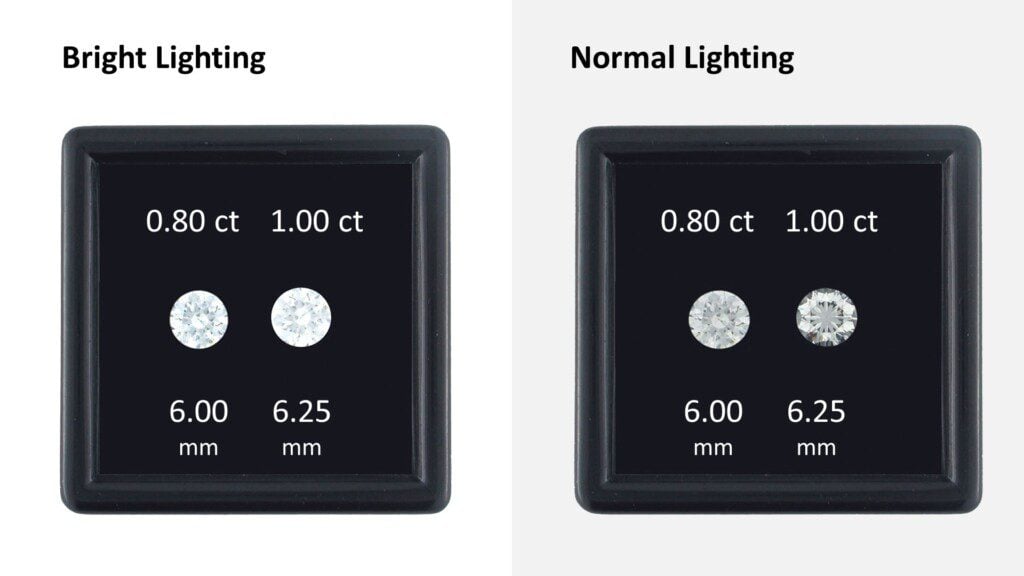
In fact, the 0.80 carat stone seems visually larger than 1.00 carat, even though it’s physically smaller.
The difference is cut quality: The 0.80-carat example was cut with proportionate angles which promote edge-to-edge brightness, looking large in many illumination scenarios. The 1.00-carat example was cut with wide (deep) angles which increased its carat weight but cause it to ‘leak light’ through the bottom, going dark at the edges and looking small away from jewelry store spotlights. Depending on cut quality, diamond carat weight can actually vary in size appearance from room to room.
PriceScope Pointer: Take a cut quality shortcut. See this Descriptive Proportions Chart to know whether a round diamond shows more brightness, more fire, or a balance of both. Our longstanding Member Recommended Proportions are there as well.
YES.
If you’re looking to buy loose diamonds online, use our special tools to reveal the best cut quality diamonds! Start your diamond search and choose from over a million loose diamonds for sale. Use our filters to find either natural or lab diamonds, as well as fancy color diamonds.
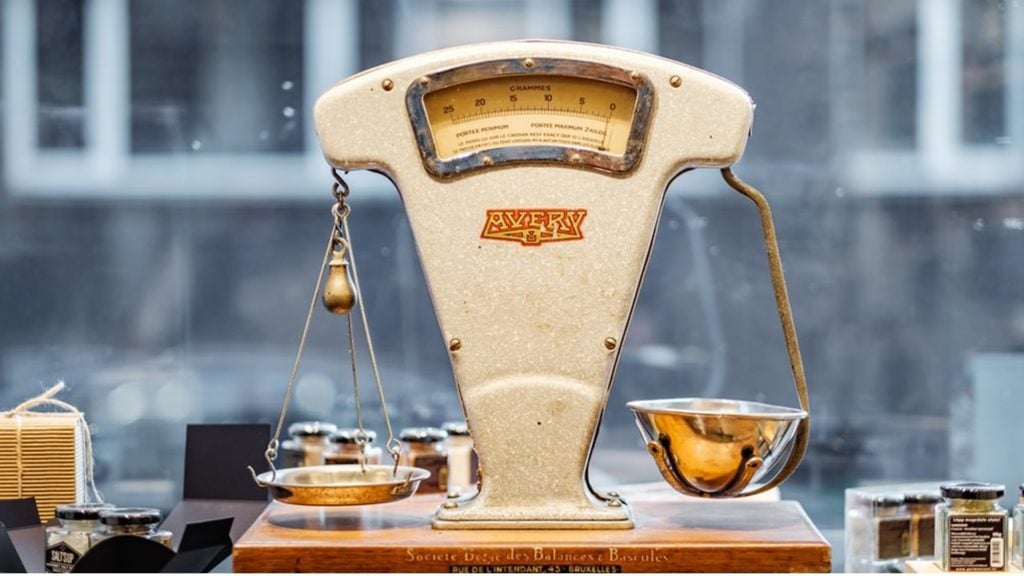
Staple diamond carat weights such as 0.50ct, 0.75ct, and 1.00 are key weights (sometimes called “magic weights”) because prices seem to magically increase at those sizes.
All other things equal, there is a negligible visual difference between a diamond of 0.99 carats and a diamond weighing 1.00 carat. Someone would be hard-pressed to sort them correctly when asked. But the price difference between 0.99 carats and 1.00 carat is significant. Why? Supply and demand. People desire to hit these key weights. Psychologically, owning a 1.00-carat diamond seems to have more value than a 0.99-point diamond, based on how many people pay the going price.
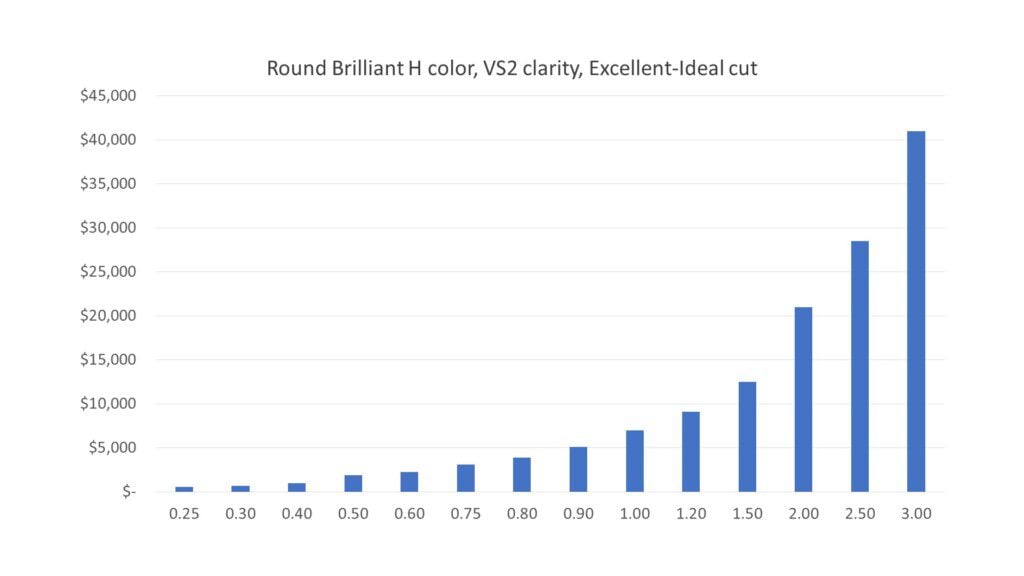
Fancy shapes tend to have more weight and less side-to-side spread. This is one reason round-brilliant diamonds tend to cost more than fancy shapes of the same carat weight.
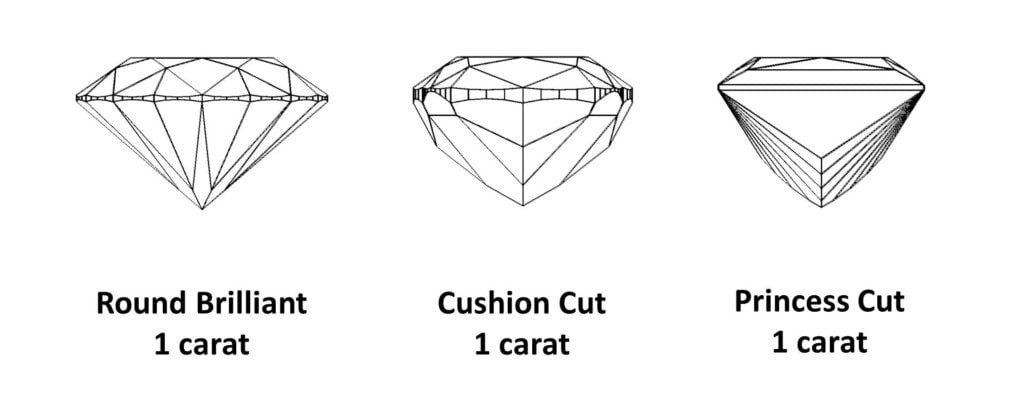
Deep shapes like cushions and princess cuts frequently carry more weight in the body than round brilliants, so they will look physically smaller from the top.
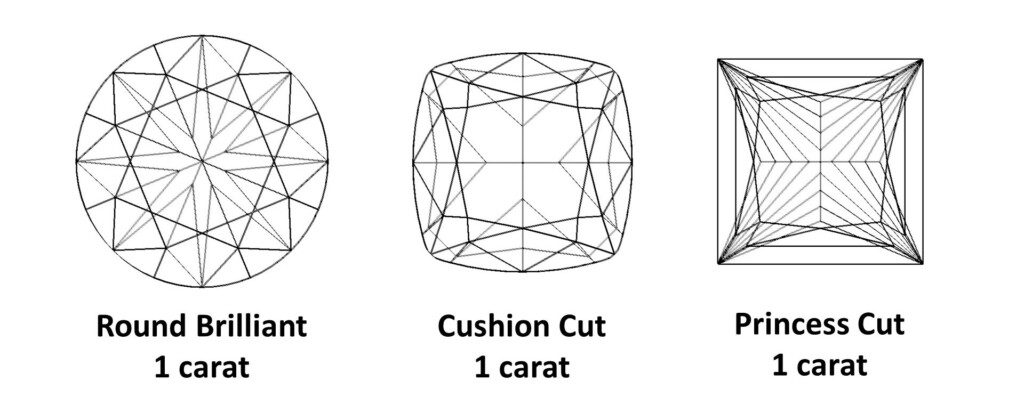
Shallow shapes like emerald cuts, marquise, and ovals can bring aesthetic benefit in terms of spread, but may not have the same dispersion or contrast potential as deeper shapes.
International carat weight rounding is not the same as what you learned in school. In the GIA system diamond weights have always been reported to two digits (hundredths of a carat) but the diamonds are weighed to thousandths or more. Currently, a diamond only gets rounded up to the next hundredth of a carat when the thousandth of a carat is a nine. For example, a diamond GIA’s scale says 1.019 carats would be rounded up to 1.02 carats on the report, but one that weighs 1.018 carats would be reported as 1.01 carats. While stricter than conventional rounding, the rule of 0.999 permits some small latitude in favor of the diamond-cutter for calibration differences between scales.
The term “total carat weight” refers to the sum of all diamonds in a piece of jewelry.
A halo ring with a 0.75-carat center stone and 0.25 carats in small surrounding stones can be advertised as having a 1.00-carat total weight or “1ctw.” Likewise, a bracelet with twenty 0.10 carat diamonds may be advertised as a 2.00 carats total weight bracelet, or “2ctw.”
Total carat weight is the collective weight of all diamonds in that piece of jewelry.
Get fast answers to any question: Ask our community of unbiased independent helpers.
People also ask
The average carat weight for an engagement ring in the U.S. is between 1.00 carat and 1.08 carats. To balance carat weight against the other Cs, especially all-important cut quality, read the PriceScope Diamond Buying Guide.
Check out our Diamond Price Guide to see how different factors impact a 1 carat diamond’s price. We have also included a diamond price calculator for you to see today’s prices in real-time, based on more than 500,000 diamond listed in our search engine.
Carat is a weight, but two diamonds of the same carat weight can appear to be different sizes, depending on both their physical spread as well as their less-discussed visual spread. Learn how to select a diamond that remains bright from edge to edge on our page on Diamond Cut.
Get More Knowledge

Retail Diamond Prices Chart Updated Monthly.

Whether you are in the market or know someone who is (or will be), you should know how game-changing online shopping has become. In today’s digital age, purchasing an engagement…
For many of us, it’s Fall! Incorporating birthstone jewelry is one of the most sweetly lovely ways to personalize your fall wardrobe. Whether it’s your birthstone or the gem representing…
At PriceScope, we are dedicated to keeping you updated on the latest movements in the diamond market. Our expert insights focus on the economic and social factors shaping consumer trends…

Want to stay updated on the most recent blogs, forum posts, and educational articles? Sign up for Bling News, PriceScope’s weekly newsletter.